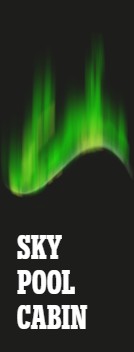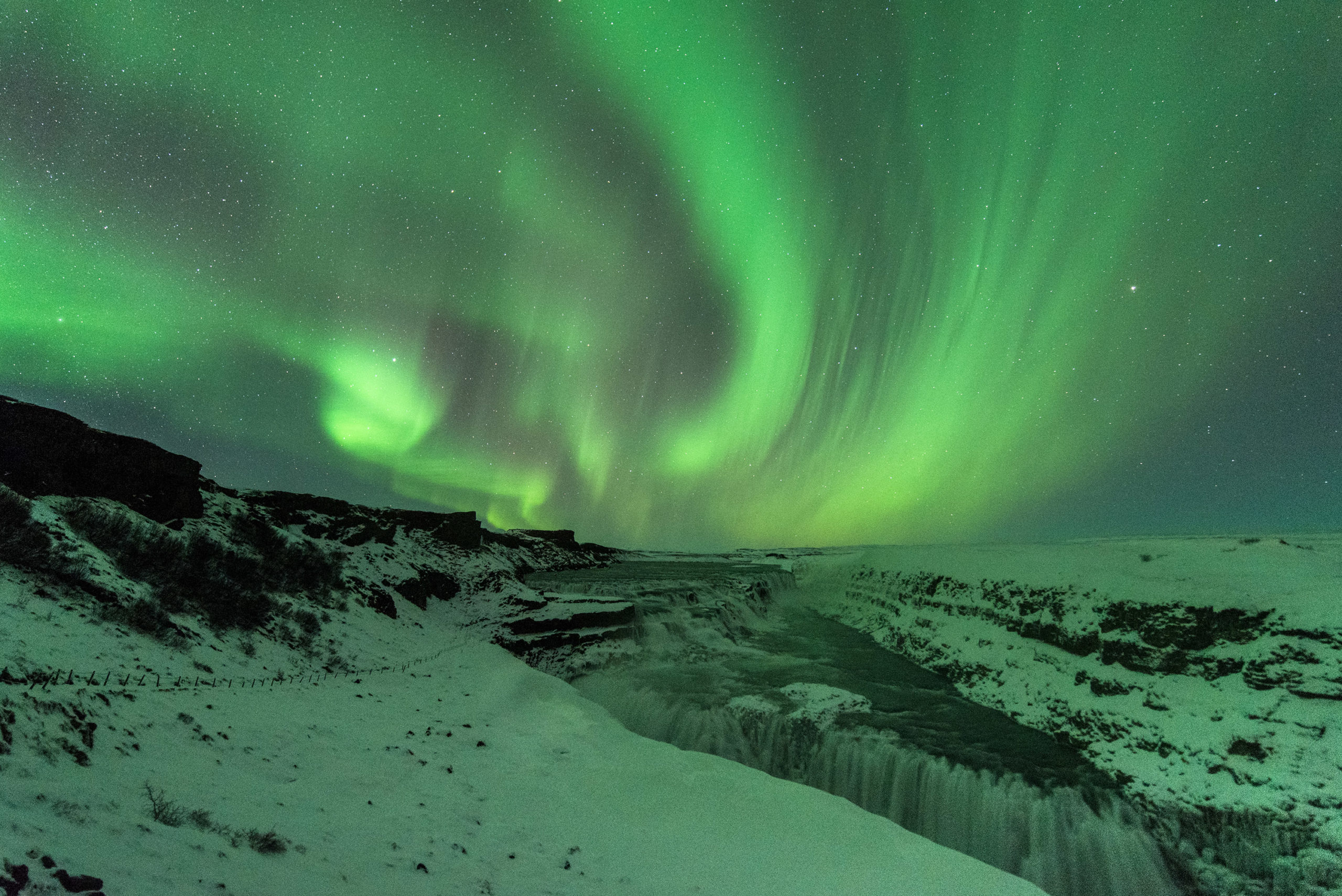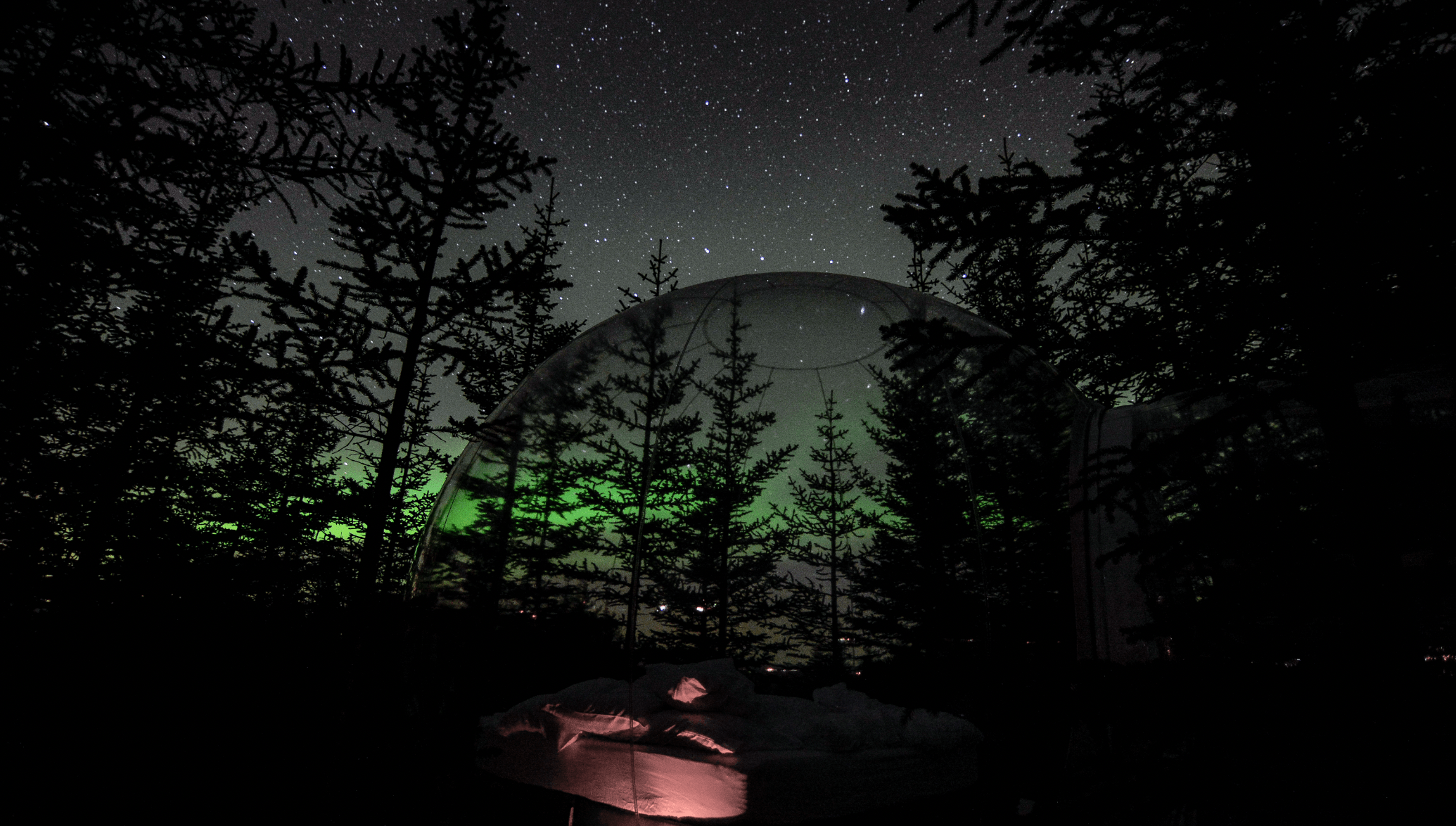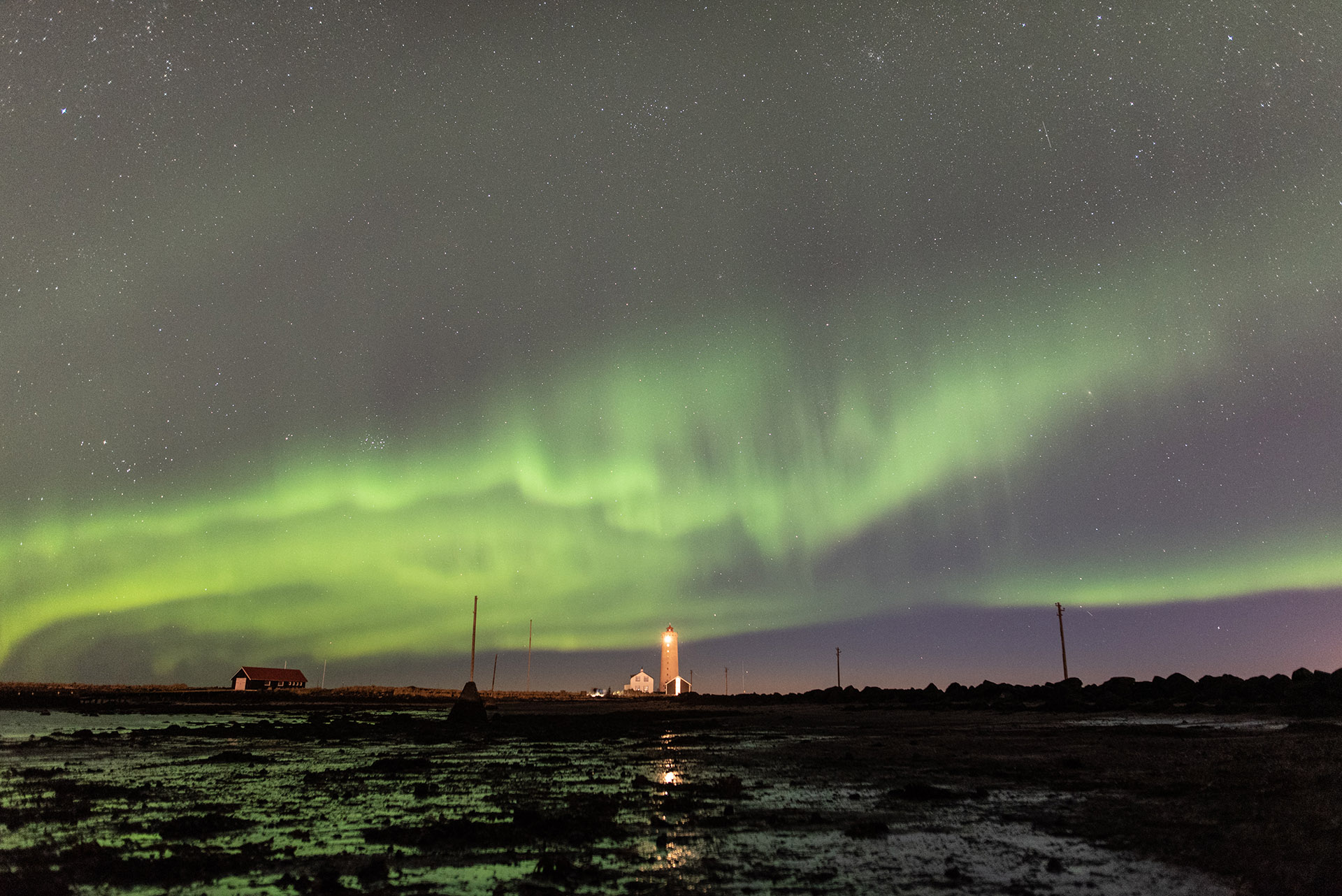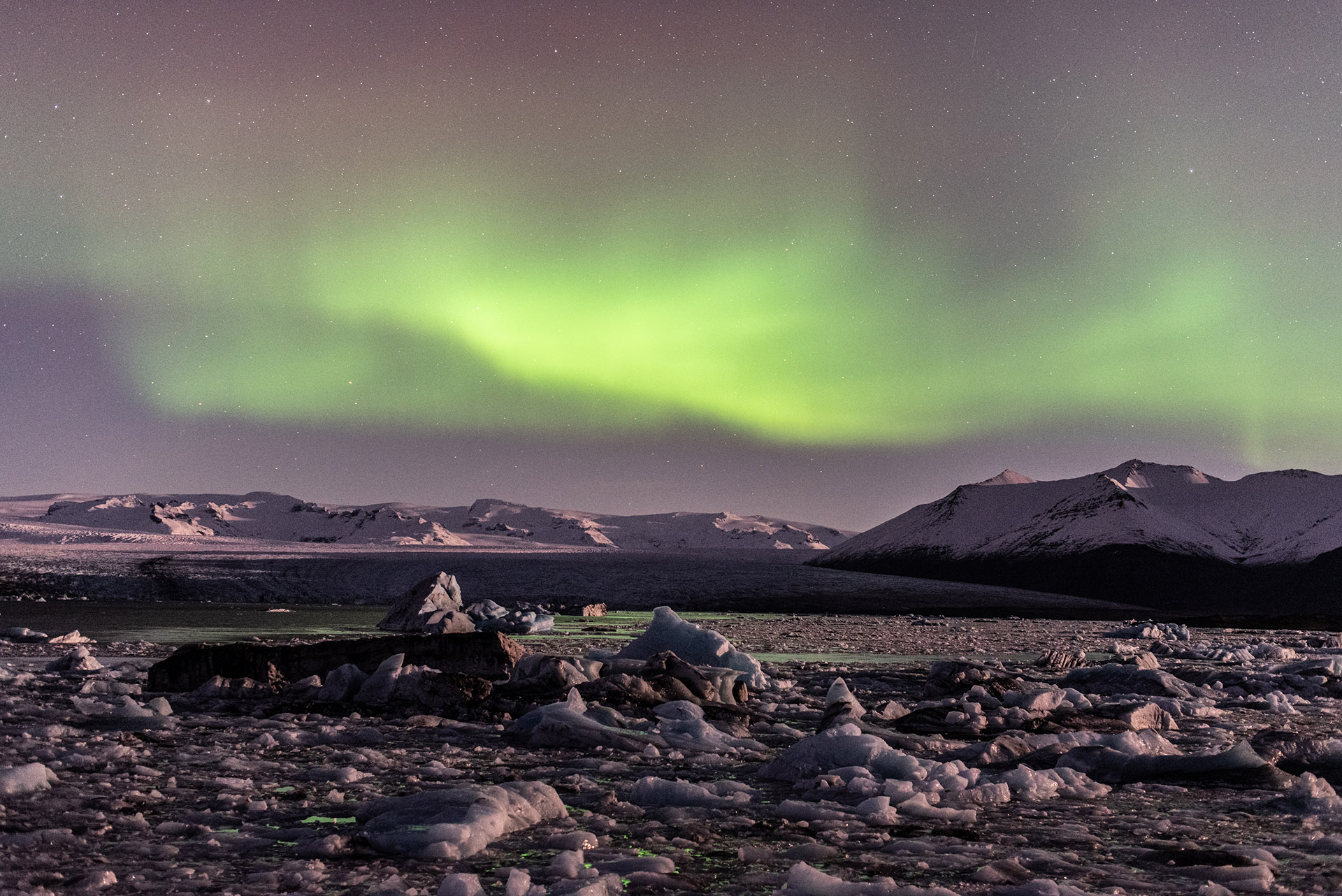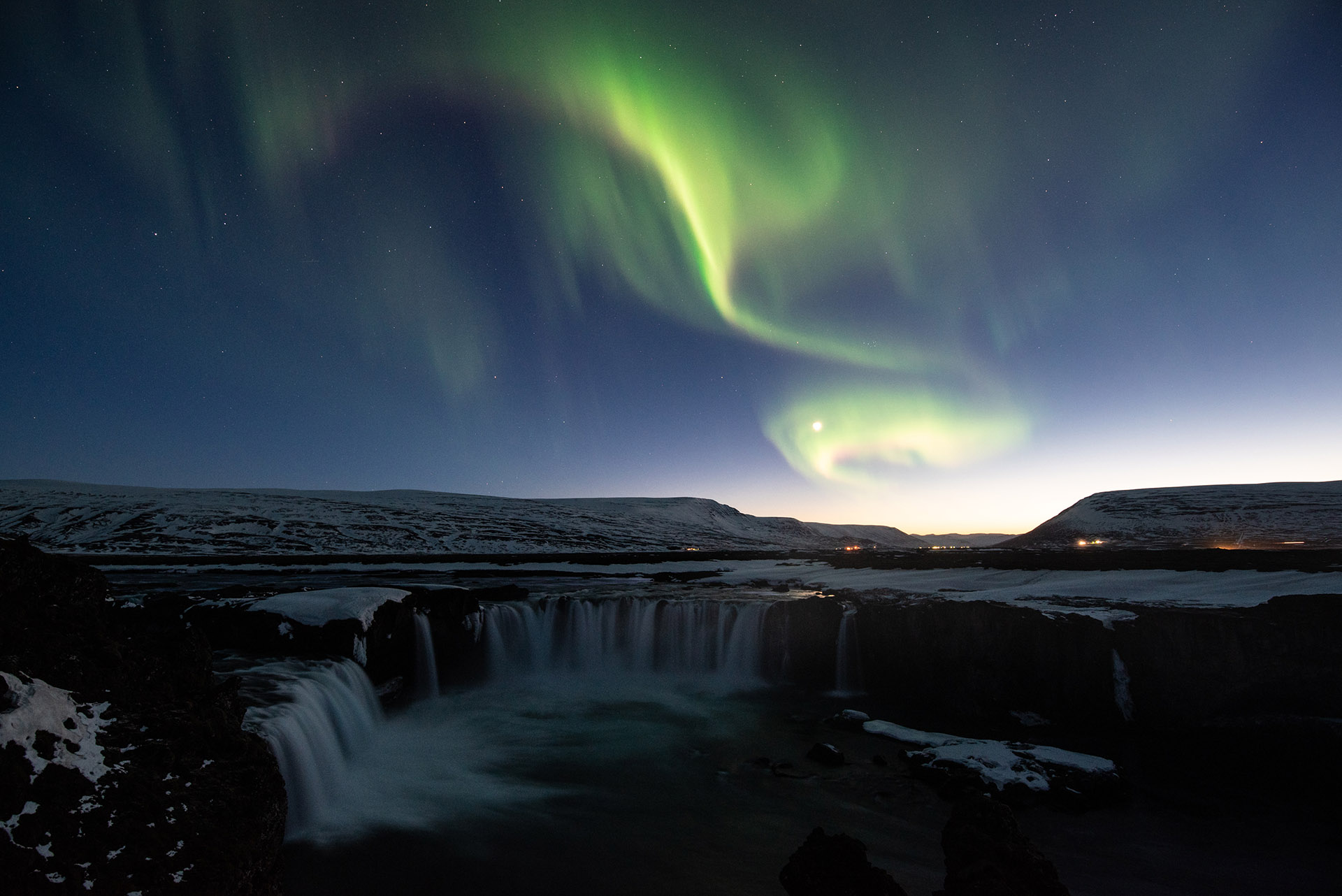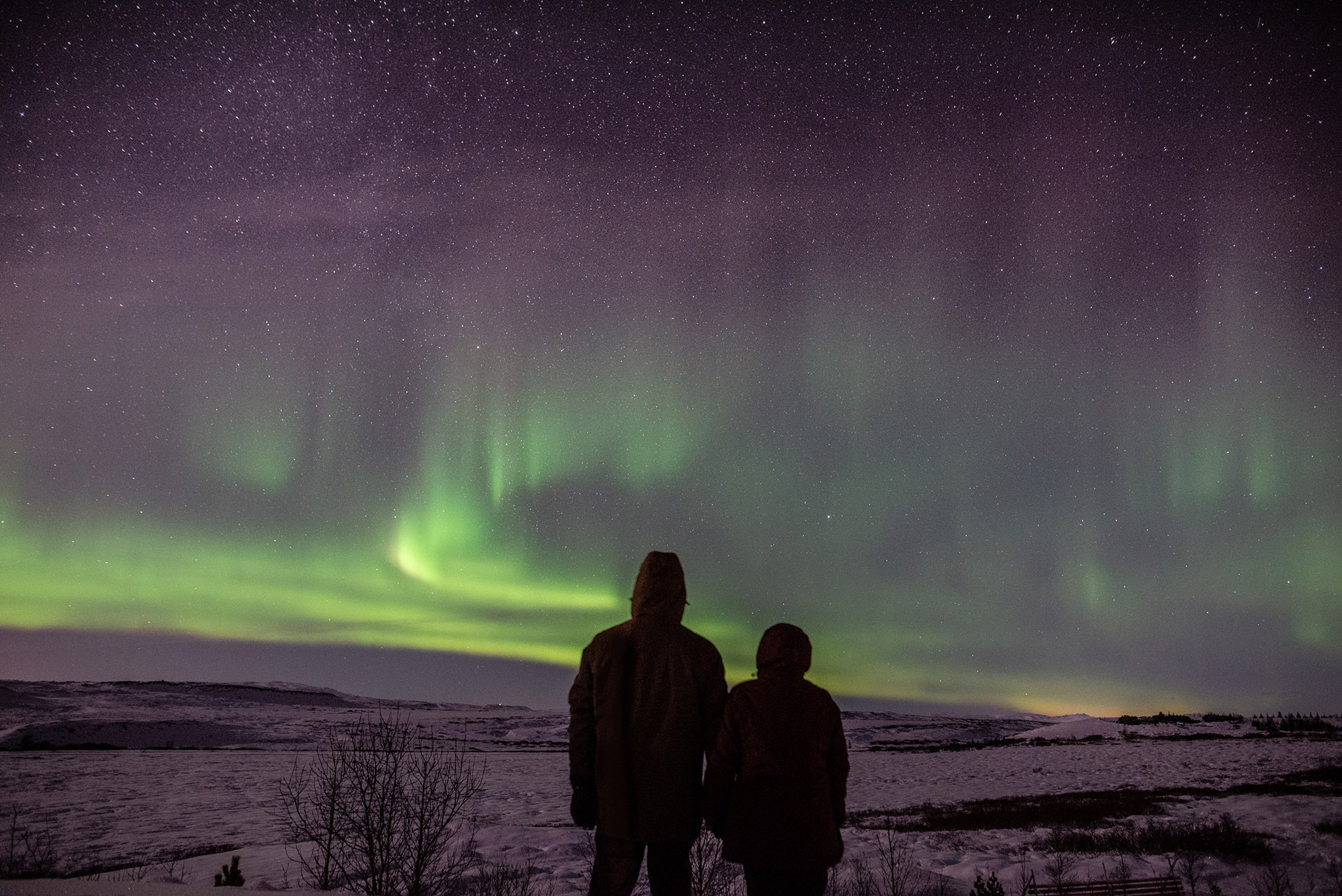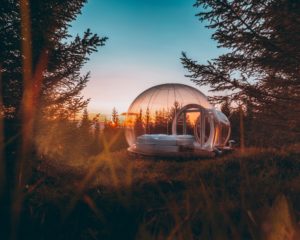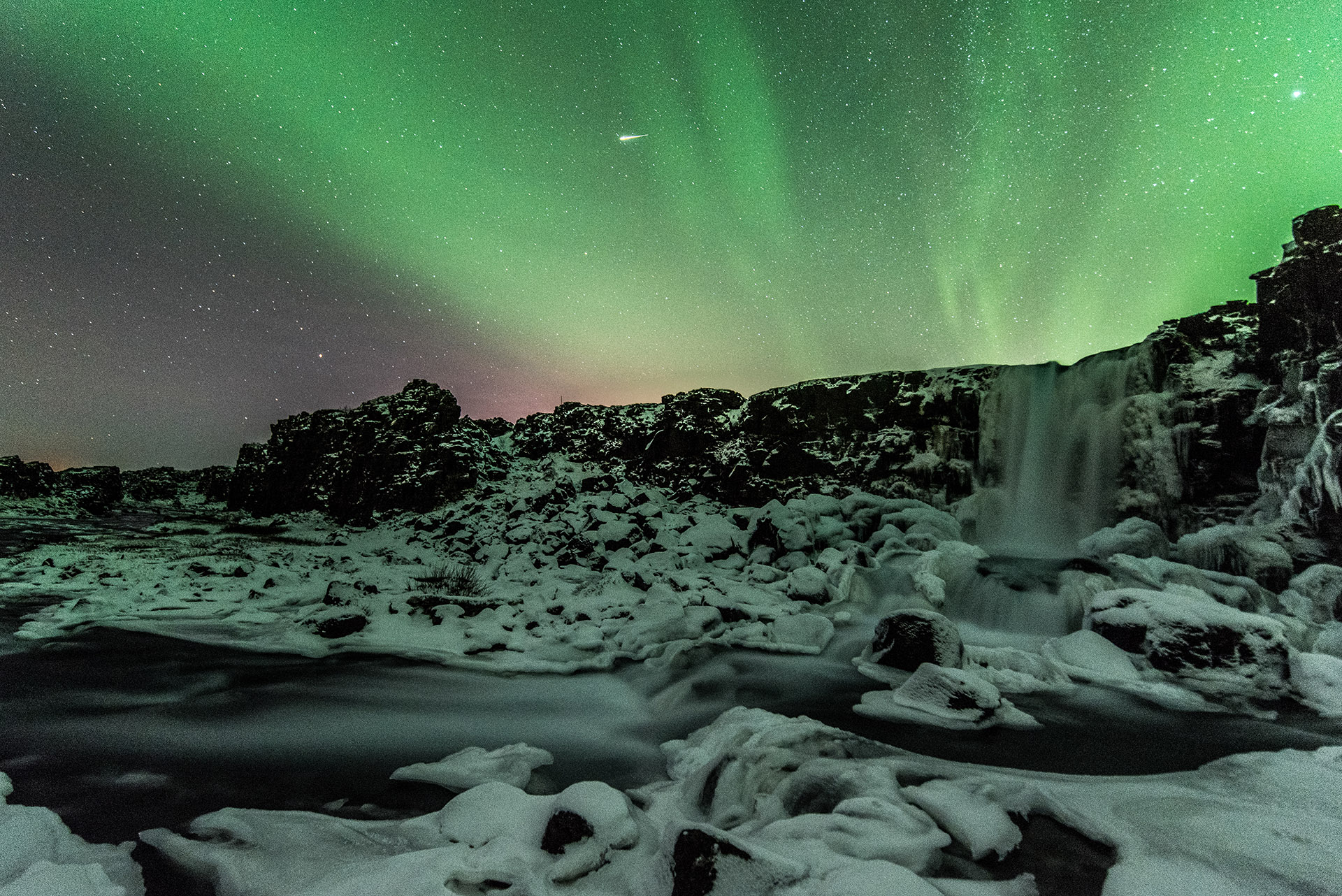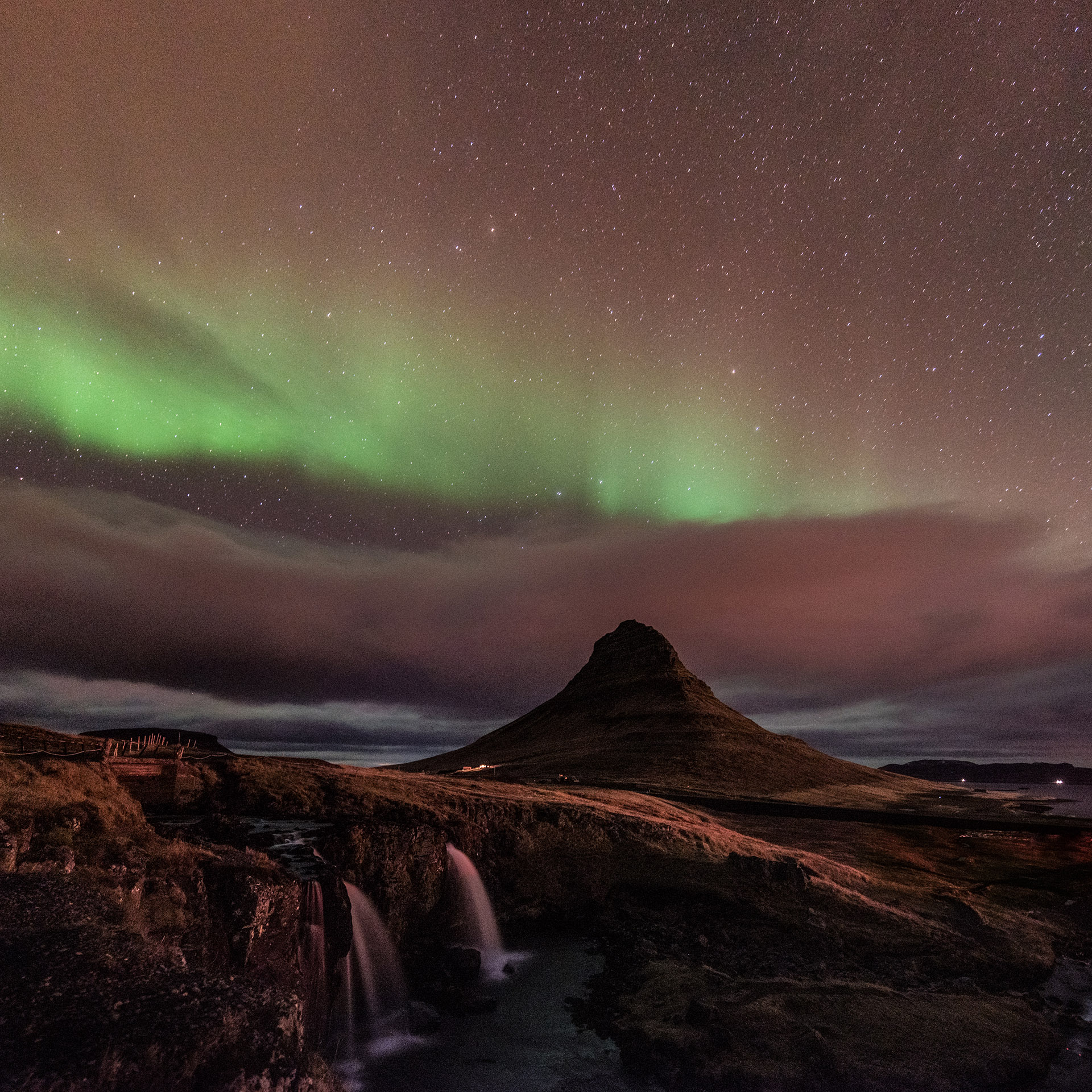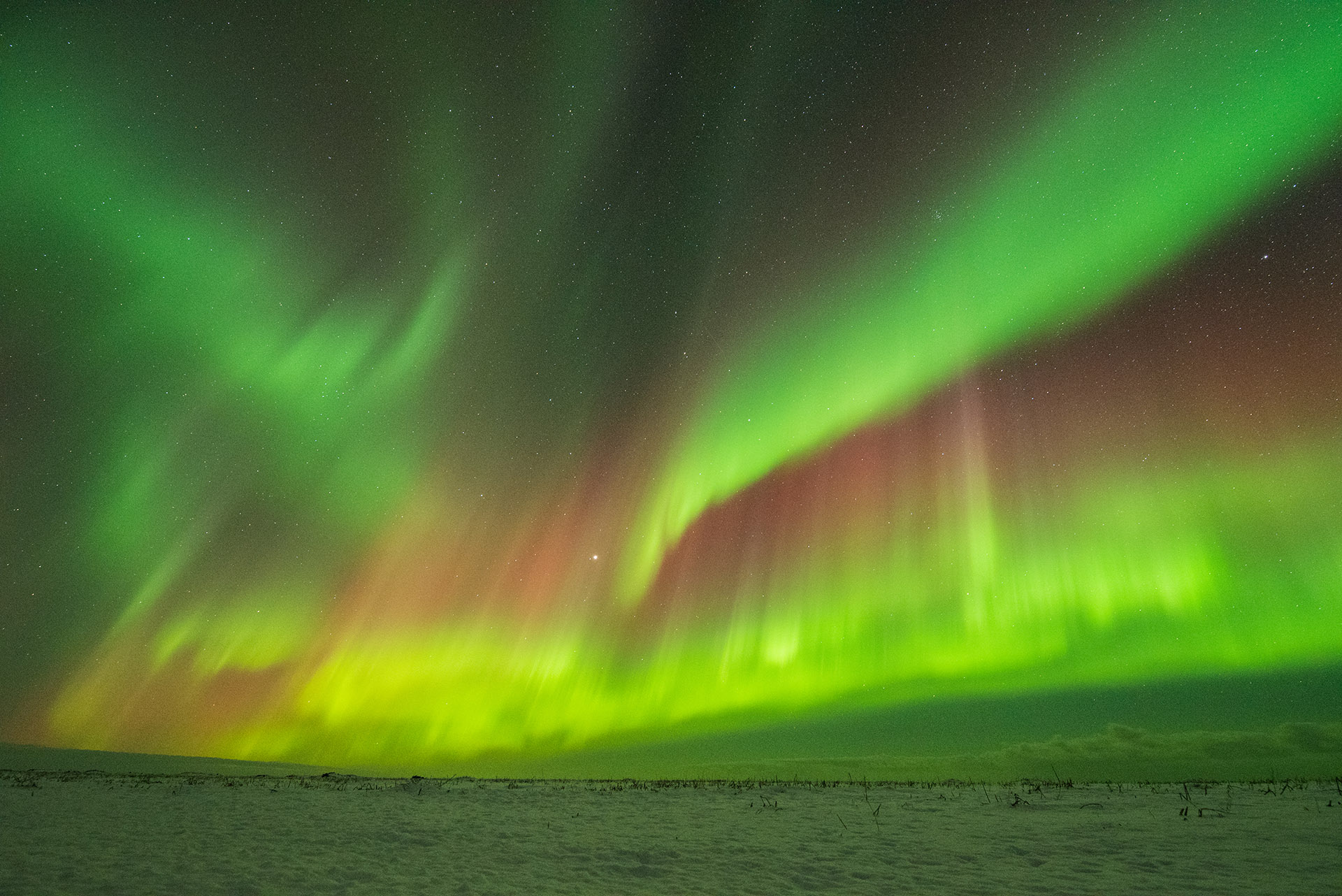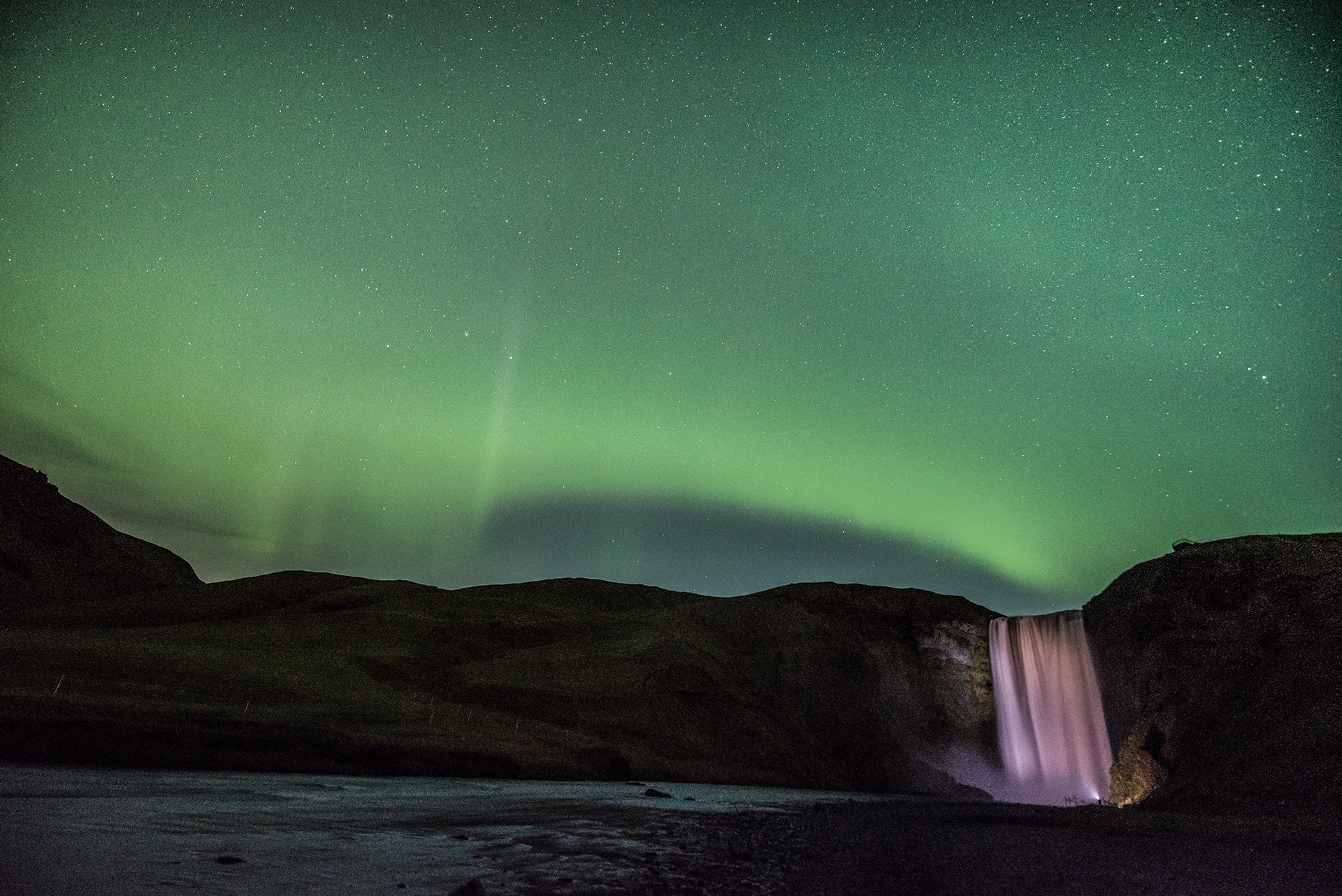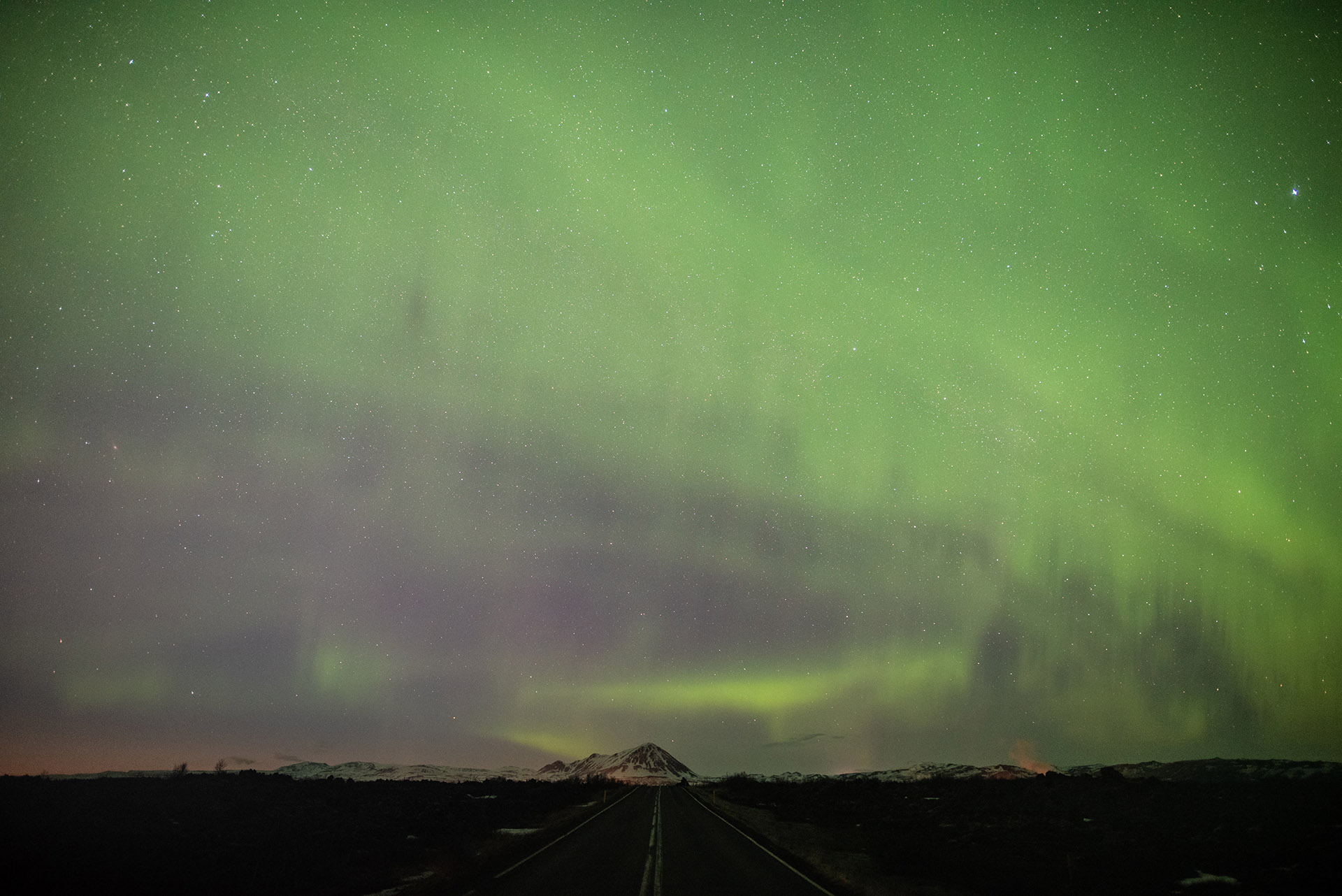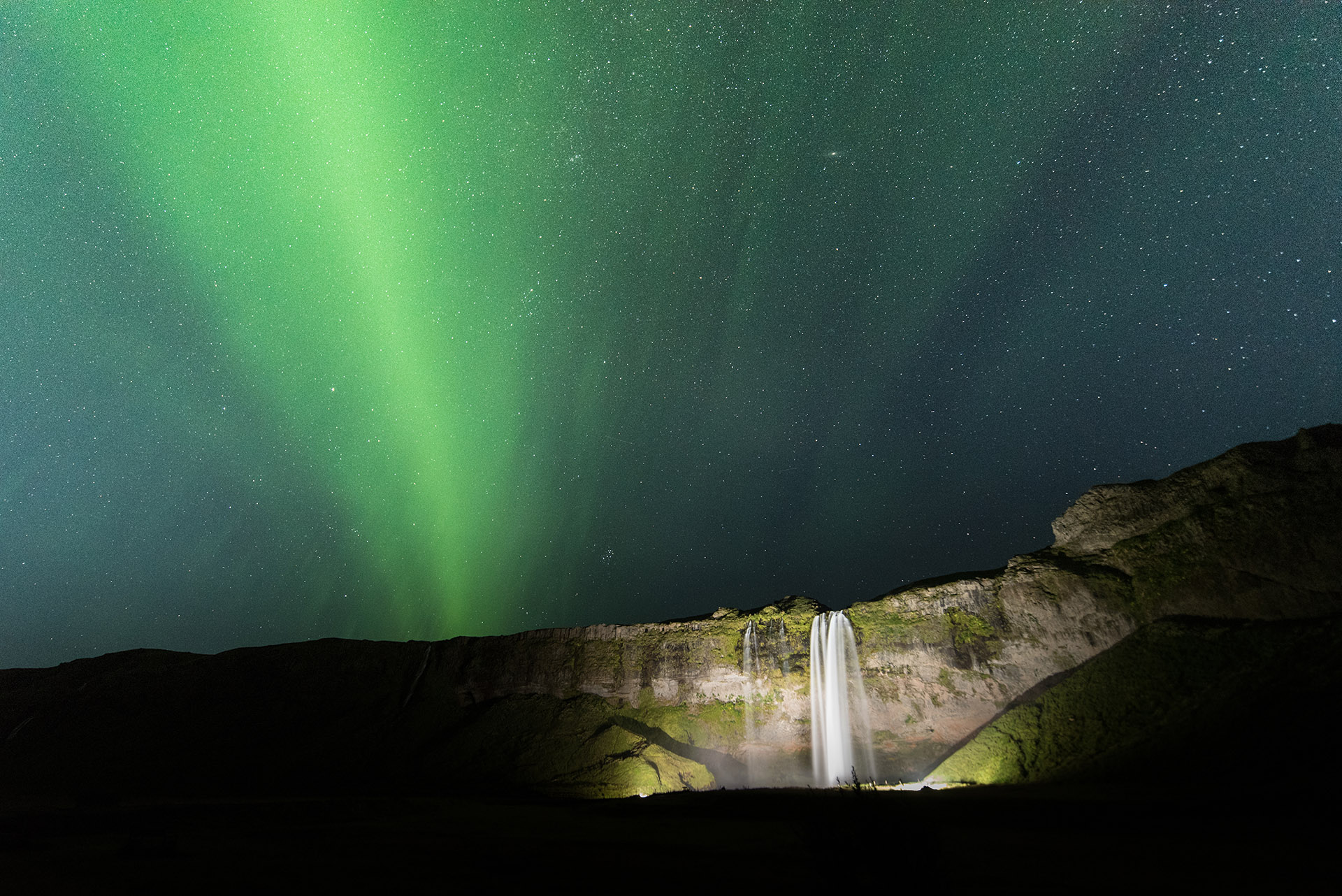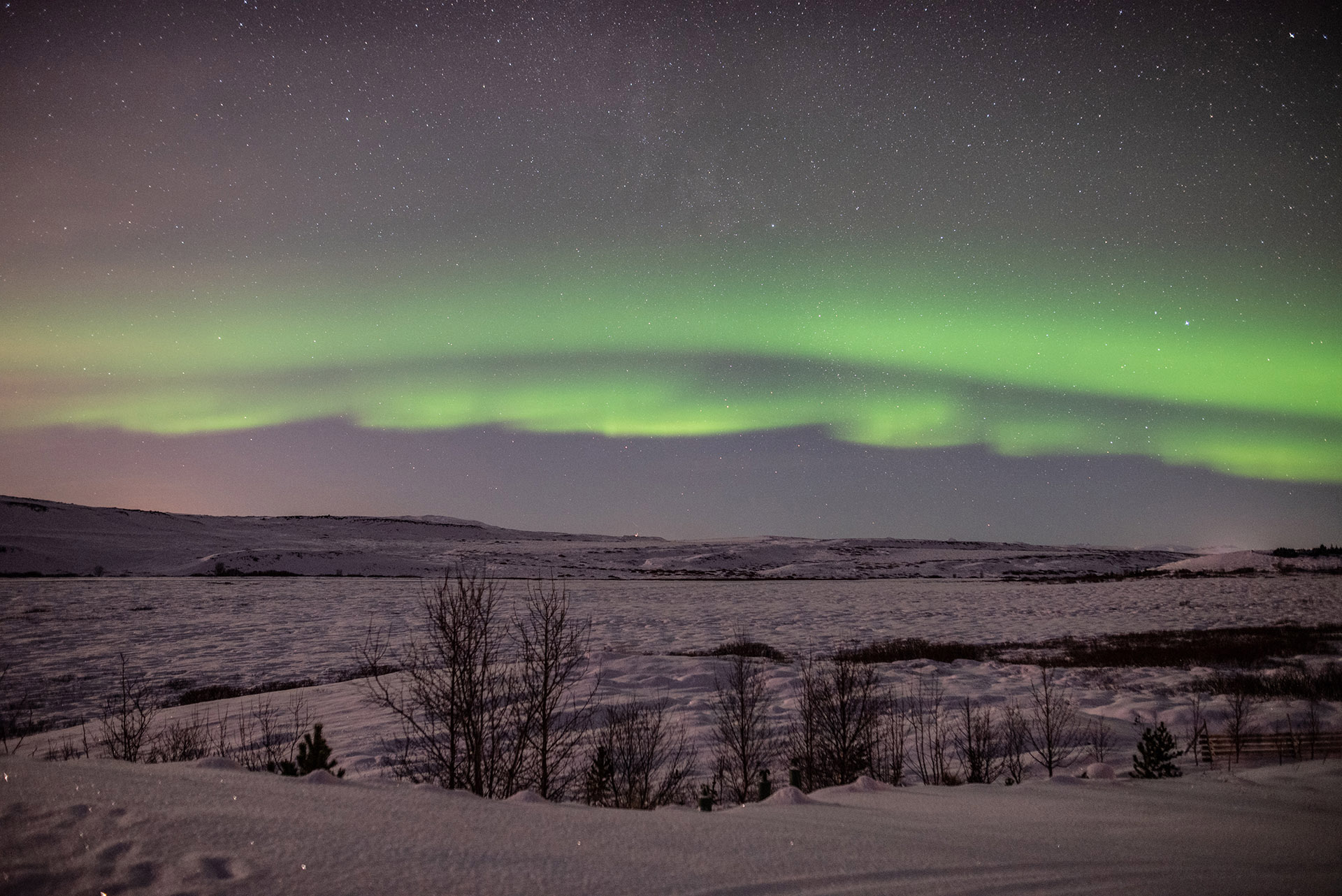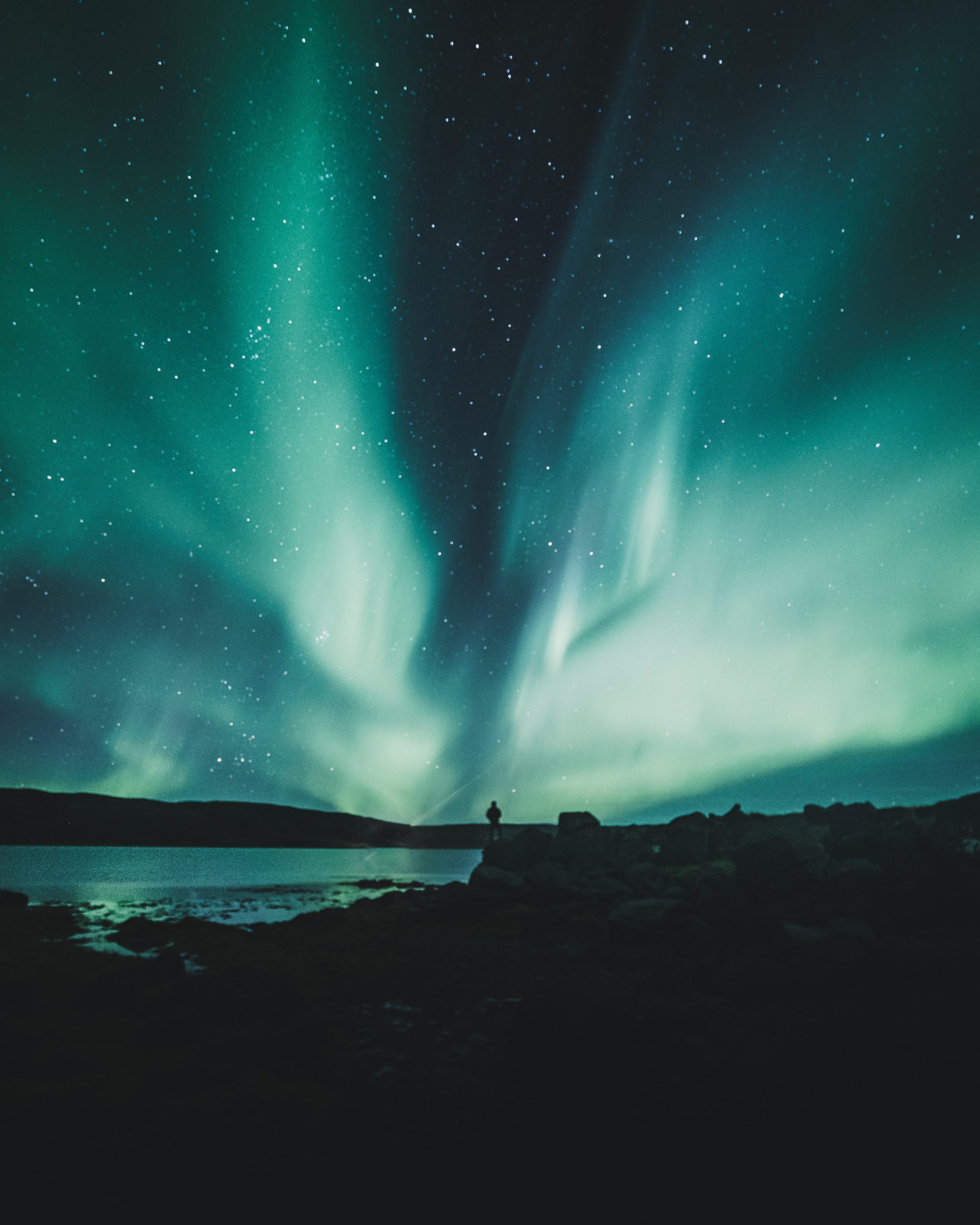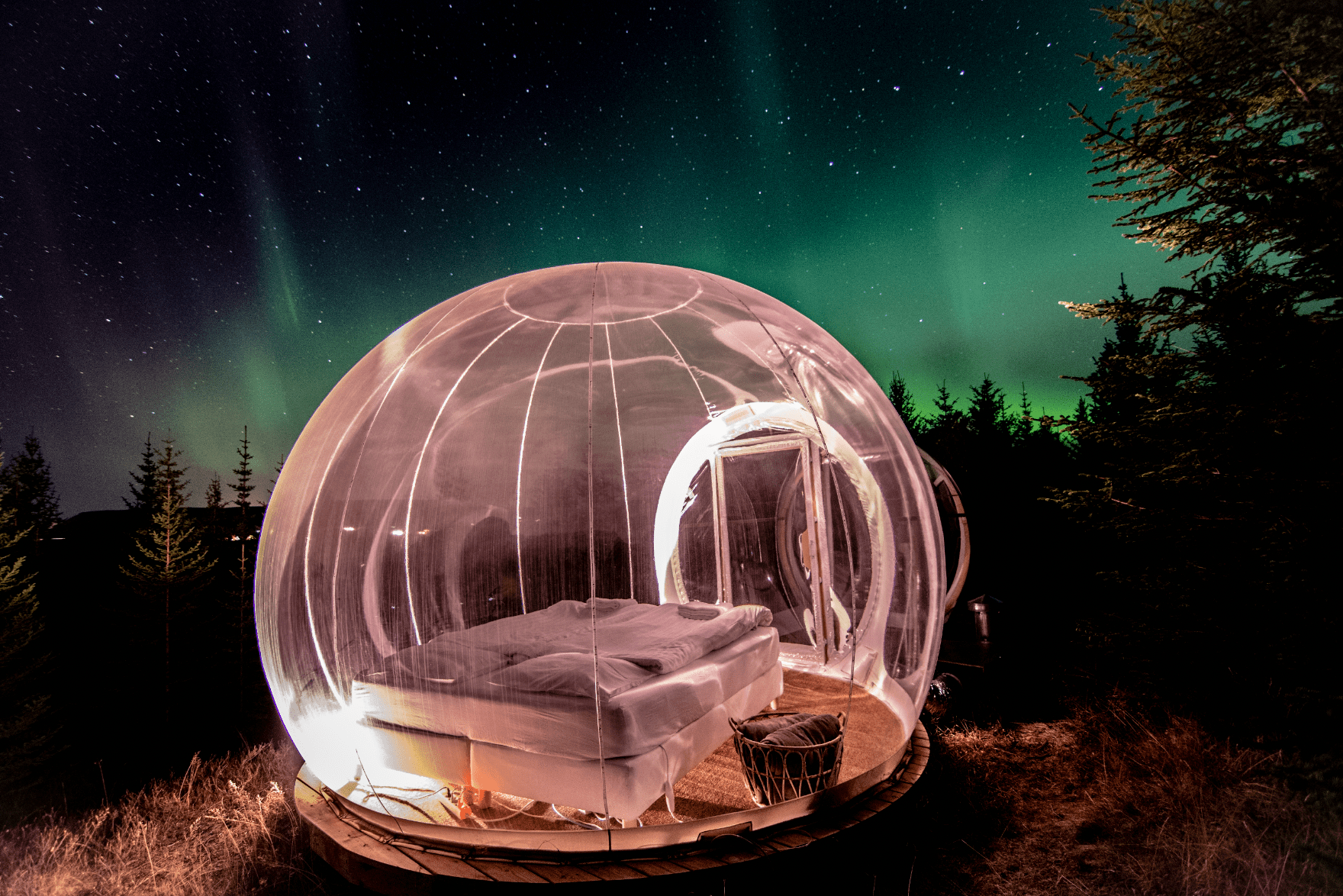When can you see the northern lights in Iceland?
By Rebecca Douglas
Do you dream of seeing the northern lights in Iceland? Join us on a journey, become an aurora chasing expert and plan your adventure with our help!
When can you see the northern lights in Iceland?
By Rebecca Douglas
Do you dream of seeing the northern lights in Iceland? Join us on a journey, become an aurora chasing expert and plan your adventure with our help!
Seeing the northern lights is one of the many reasons people want to travel northwards and there is so much to learn about how you can optimize your chances. This article is going to take you through a journey of adventure, full of aurora chasing tips, so that you can have the best possibility of seeing the northern lights on your trip to Iceland.
When you are planning a trip to the land of fire and ice, one of the first things you’re going to wonder is ‘when can I see the northern lights in Iceland?’
If you are reading this, you will already know that Iceland is one of the best places in the world to see the northern lights, and experiencing this majestic celestial show is certainly something high up on a many people’s bucket lists. There is a quick answer to this question in general terms, but learning more will help you to become a bit of an expert ahead of your holiday and increase your chances on seeing this extraordinary natural phenomenon.
So, buckle up, sit tight and join us on this virtual journey to become an expert in how to chase the northern lights and have an unforgettable adventure during your travels in Iceland.
When can you see the northern lights in Iceland? The quick answer!
Any time between mid-August to mid-April. But there is so much more to know about why and how you can see them. Here is our step by step guide to all you need to know about chasing the northern lights.
When is the best time to see the northern lights in Iceland?
The main time for the aurora chasing season falls between September to March, where darkness returns from 24/7 daylight of summer and the nights get longer. The longer the night, the more available darkness there is for the lights to dance across the sky!
For many months of the year, Iceland experiences the never ending daylight of sub-arctic summer. During this time the northern lights simply aren’t visible as they are not bright enough to overpower daylight; even though they might be active! As mid-August approaches, the never ending daylight starts to turn into astronomical twilight and the feeling of night time starts to draw in.
It is this moment onwards and through to mid-April when the magic can happen!
Where are the best spots to see the northern lights in Iceland?
It is possible to see the northern lights anywhere in Iceland, but there are several ways to increase your chances of seeing them and scouting out good spots. You can book accommodation that is outside of the city and in darker areas without light pollution affecting what you can see.
5 Million Star Hotel is truly perfect for this. Their unique bubble stays are out in the countryside of Iceland and you have a 360 degree window to the sky to enjoy the aurora from the comfort of your toasty warm bed!
Can you see the northern lights from Reykjavik?
On nights where aurora activity is quite strong, it is possible to see them overpower the street lights above the city. A great location to walk to in Reykjavik is the Sun Voyager, the steel boat sculpture on Sæbraut. Here you will enjoy views to the north of the sky over the mountains, and the mighty Mount Esja.
If you have a car but don’t want to travel far from the city, Grótta lighthouse is a good dark spot on the Seltjarnarnes peninsula.
Is there one month that is better than another to see the northern lights?
Generally speaking, you can see the aurora from the middle of August to the middle April. This is what expert northern lights chasers call ‘the aurora season’. However, as you approach the midpoint of winter, there is of course a lot more darkness and longer nights meaning more opportunities to see the aurora.
What is the best time of night to see the northern lights?
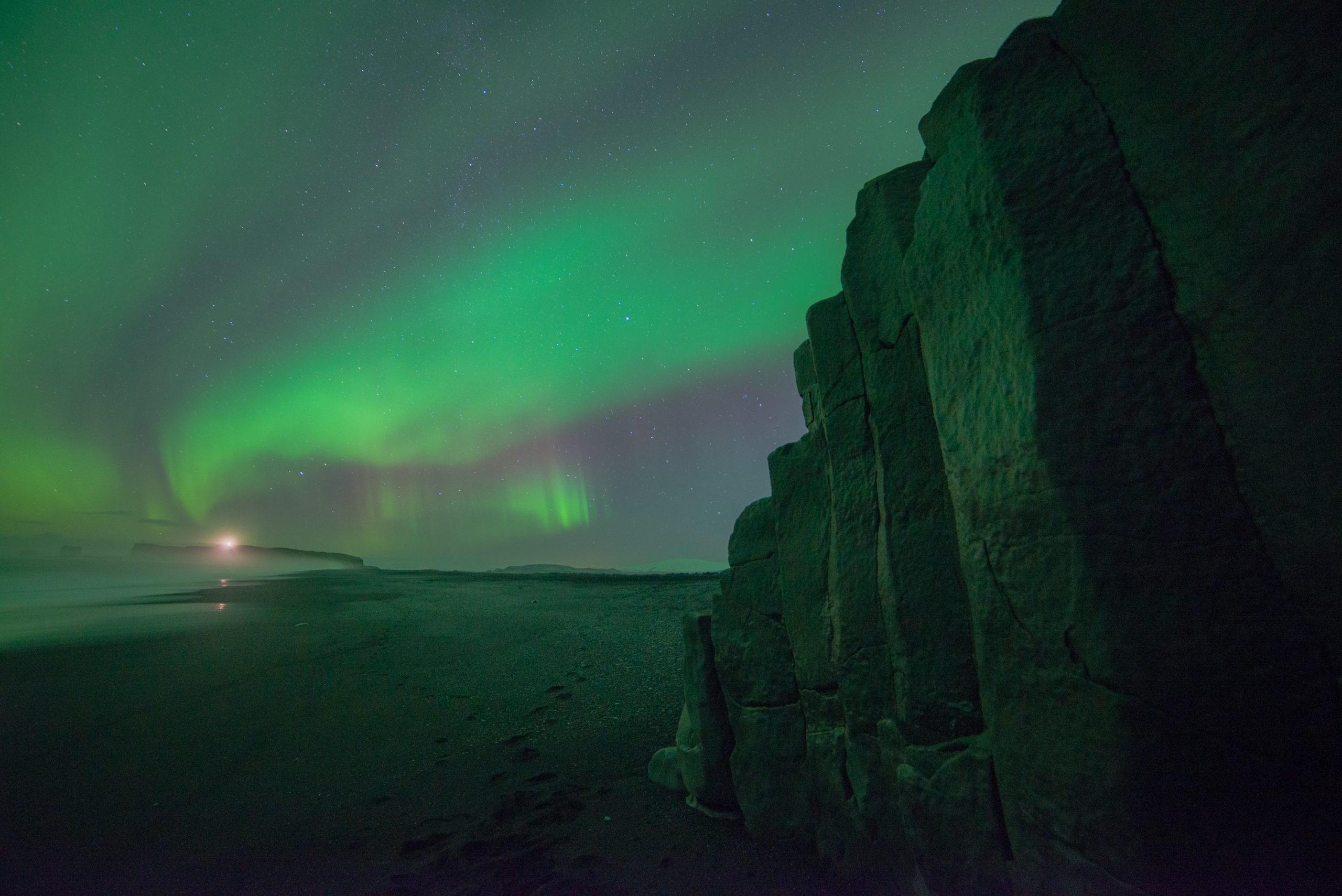
There are lots of myths about the best time of night to see the aurora. The reason they occur is that energy from the sun arrives and excites particles in our atmosphere. This energy arrives 24/7, all year around, but of course, when it is daylight you can’t see them. Some of our expert northern lights chasers have seen the aurora from when the sunsets on nights of extremely high activity, all the way through to dawn. However, if there isn’t much energy arriving from the sun, on night of low activity, they only appear for a short amount of time. But if you’ve got clear skies, you should always be on alert for the lights during your time in Iceland!
Are there better times of the month to see the aurora?
The sky is at its darkest time when there is a new moon- and darkness is certainly a plus when it comes to hunting the aurora! But as the moon starts to wax, it paints light across the landscape and during this time you you can create some lovely photos with some moonlight, highlighting waterfalls and other incredible features of the landscape in Iceland.
It's a kind of magic!
We’ve mentioned the word magic and it really is the most extraordinary and unbelievable wonder! The aurora borealis occurs because energy from the sun strikes earth’s atmosphere releasing excited gases that produce light. Subsequently all of those light particles dance together and glow across the night sky. The lights serve as a real reminder that we are so connected to our universe and the sun that is at the heart of that.
PLAN YOUR JOURNEY
Travelling to Iceland?
Check our overnight tours with a driver guide that includes a one night stay in a bubble.
*Starting from ISK 59.900 per person
What causes the northern lights?
Ok, now is the time to buckle up for the science bit!
The sun at the centre of our solar system, is a big angry ball of plasma, constantly emitting energy in the form of solar winds. When it is particularly fired up, it throws out solar flares. This energy leaves the sun and if it travels, (wait for it!) 93 million miles in the direction of earth, our atmosphere steps up to protect us from it impacting on us.
When the charged particles from the sun hit earth’s atmosphere, they cause the gas particles to become agitated and in all of this excitement, they release a photon, which is basically, light. When this is happening to billions of particles at the same time, they start to move and dance together and these tiny photons create the magical glow of the aurora.
Why are the northern lights sometimes called polar lights?

When the sun’s energy hits the earth’s atmosphere, our magnetic field protects us by deflecting the particles to the poles.
When there is low solar activity the aurora tends to only be visible close to the north and south poles; but when there is a lot of activity, the geomagnetic poles repel it and the band pushes further south.
Hold on a moment, there is aurora at the south pole?
Indeed! The Aurora Australias or southern lights happen in exactly the same way, but in the southern hemisphere. However, because there is so little inhabited land in the area they are active, you rarely see photos of them.
A trip to Iceland gives you one of the best chances to see this incredible natural phenomenon, as it is directly in the aurora zone.
Why are there different colours of northern lights?
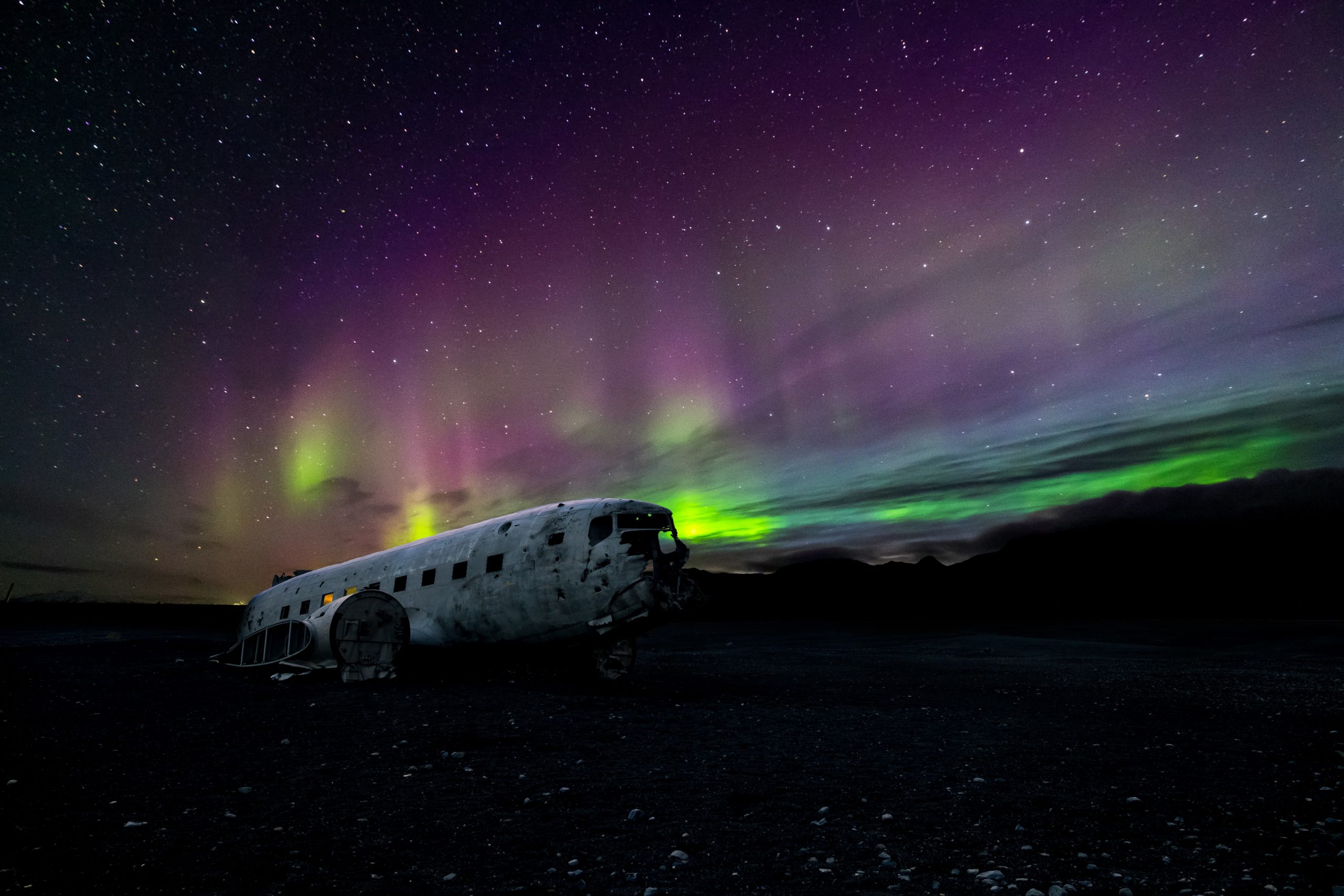
Most people think of a green colour when they think of aurora borealis and there is a really cool reason why.
There are three colours of aurora that you tend to be able to see. Green is the most common because when the sun’s energy gets oxygen all stirred up it emits green coloured photons. Of course, earth’s atmosphere is mainly made up of oxygen, so this is why we get to see the green most vividly.
Sometimes you’ll see red/pink glow and whilst this is also oxygen. This is a little more rare than the green as it shows up when oxygen really high up in our atmosphere gets stimulated.
Even more rare than this is the purple/blue colour. Want to guess which gas needs to get excited to see purple? Well, it is nitrogen, which is not as abundant in the make up of the gases in earth’s atmosphere and so we see it less regularly.
Do the colours of the northern lights look as vivid in the sky as they do in photos?
On nights of moderate to high activity, there is so much energy arriving and stirring up all the gases in our atmosphere that they do appear as vividly as the photographs you may have seen.
Nothing prepares you for the overwhelming feeling of them moving so fast, that it is almost like the sky is ripping open; with new patches appearing like javelins of light elegantly darting across the atmosphere.
How can you understand the northern lights forecast?
If you’re new to aurora chasing and want to learn about the forecast, you’ll probably stumble across a KP rating which has an increasing scale from 1-9. This is helpful to give a broad idea that there might be some aurora activity about to go down later on in the day.
However, this scale tends to give an overview of the strength for 3 hour periods at a time and, oh my, a lot can happen in three hours. This is where real-time information becomes really important.
What apps do you use to get real-time aurora forecast information?
After many years of chasing, one of the best real time aurora apps is The Glendale App built by Andy Stables. It uses magnetometers that are built in the aurora zone and work almost like a thermometer. It shows you how ‘hot’ or in the case of aurora, how strong the northern lights will be at that point in time.
If you want to learn more about the science of it, you can read about how it uses the speed, density and pressure of incoming solar wind to forecast how active the aurora might be. It even forecasts the time at which the aurora may start to become active.
The most important figure to focus on is the substorm tracker. When the information here says ‘substorm in growth’, it means that things are charging up, almost like a battery. The more positive this nT number, the more energy is building.
When this changes to ‘substorm in expansion’ this is time to GO OUTSIDE! Yes, expansion means the energy is releasing, the gases in our atmosphere are at work and the aurora will be starting to glow.
An increasingly negative nT number here is what you want to see, as this means the aurora is getting more and more active. When ‘substorm in recovery’ appears this means the aurora activity is decreasing, but it could pick up again; you just have to keep an eye on the app and the skies!
There is a great community using the app. You can live report if you are seeing the aurora or if there is cloud. A lot of aurora chasers use it when they are in Iceland, so it can help you to find clear skies if you can see another northern lights chaser is reporting positive sightings.
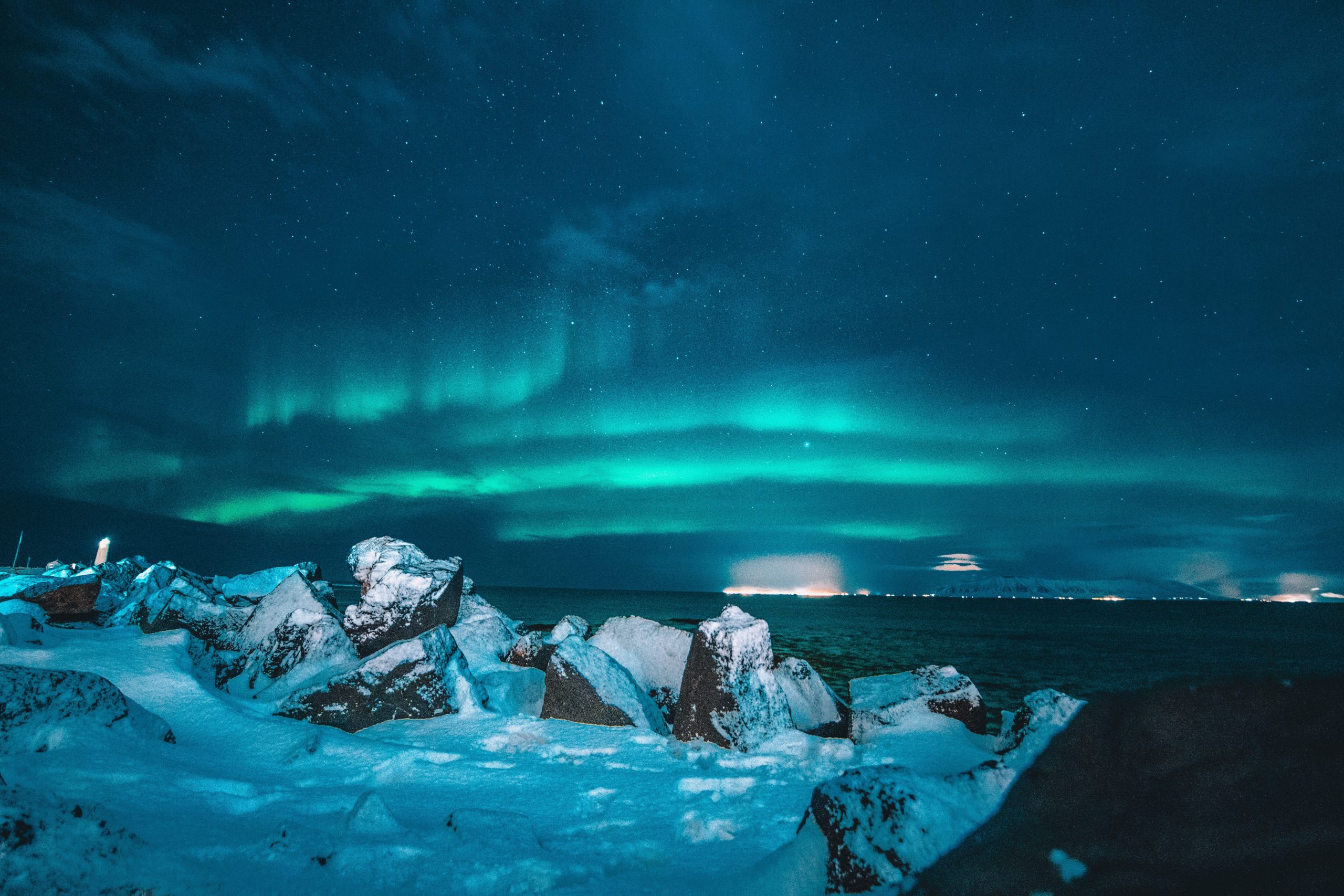
If the forecast is low, is it still worth trying?
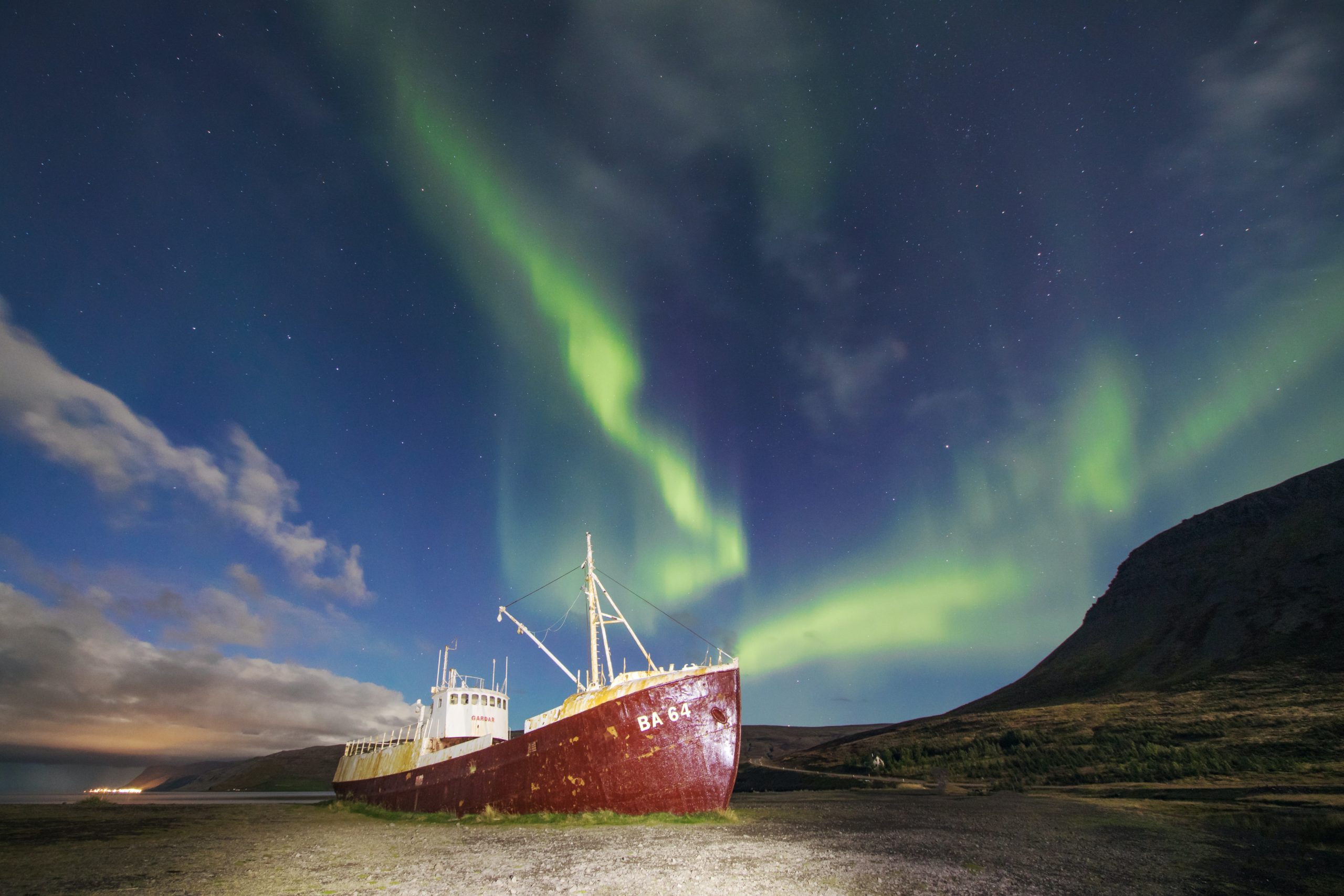
Absolutely, 100% yes! If you have travelled all the way to Iceland to see the aurora and there is any level of activity outside, you need to be wrapped up, ready and out there looking!
Some of the most beautiful displays can arrive with relatively low activity. If you have clear skies, even without the northern lights, you will be lost in the amazement of how the stars dazzle in a place where there is minimal light pollution. You can even see the Milky Way; it is like looking at the edge of our solar system from Iceland!
What do you need to look for when you’re trying to see them?
As the name suggests, firstly, get your bearings on where north is. Your phone map can help you with this if you’re not sure.
The northern lights almost always start in the north of the sky, unless they are super active, in which case you will see them everywhere.
You may notice an opaque glow in the north of the sky, it almost looks like see-through milky cloud. Then you might suddenly see a flash or pulse bright that you can see stars shining through; and it can’t possibly be cloud if you can see stars through it! This is a very weak and gentle glow of aurora. As the intensity of the activity increases what you see will become more and more visible over time.
What top tips do aurora experts have to say about where you can see the northern lights in Iceland?
Staying in a dark spot like the Bubble Hotel is the perfect location for seeing the northern lights in Iceland.
Being away from light pollution is really important, you might want to turn all your lights off to help make things darker and the aurora brighter.
Wrapping up and going outside is a wonderful way to see them too depending on where you are.
What do the northern lights look like when they are visible?
There are a few things to look for when the aurora becomes visible. Firstly, an arc traveling from the north of the sky. This arc can start to glow brighter and brighter; as the northern lights get more active, you might start to notice pillar shapes appearing and flicking up into the sky. These shapes start to dance along the arc like it is a ribbon shimmering- this is when you really start to see the aurora at its best.
When they are really active, there can be a sudden intense peak in the display. What looked green suddenly looks white and you will see lots of purple start to dazzle too. It is a really intense experience to be part of and one that you will certainly remember forever.
How do you photograph the northern lights?
Firstly, if you don’t have a camera, you might be really surprised at what your phone can capture. A lot of phones now have night mode or pro settings where you can control things like shutter speeds to help capture the show in the sky.
If you have a camera, get to know how to use it when you’re in good light and get it set up, with the lights on, before you go outside. You will want a tripod for stability as the shutter will likely be open for several seconds to create your dream photos of the aurora borealis. If you have a remote shutter trigger, this can be helpful too, so you can use that to take the photo, rather than touching the camera and it wobbling.
Ideally, a wide lens is best, a lot of standard lenses are 18-55mm and this will do you fine. More seasoned photographers might want a 14mm or 24mm lens. Putting the camera in manual mode is essential for these shots, as well as using manual focus.
There are not standard settings for this, however a good place to start is with an 8 second shutter speed, an aperture as low as possible (f1.4 – f3.5) and an ISO of 2000. Once you’re all set, take a shot and see how it looks. If it is too bright then adjust your settings, taking the ISO lower, make the aperture narrower or a faster shutter speed. If it is too dark, then you can look to increase the ISO, pick a wider aperture or a slower shutter speed.
Remember, there are no perfect settings, this is down to personal choice and capturing something you’re happy with.
What does it feel like when you see the northern lights?
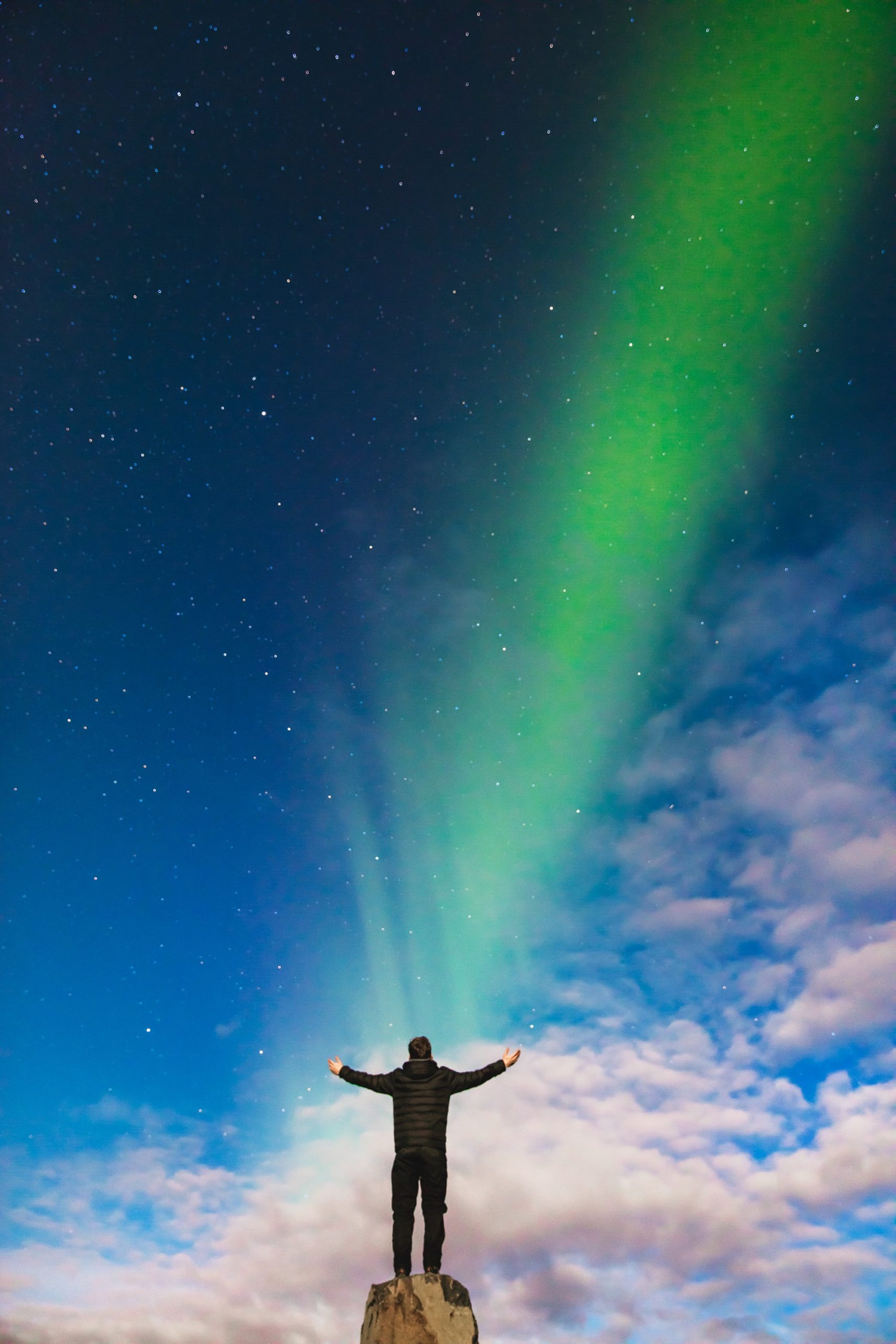
Many people talk about it being a life changing experience. It is so moving to stand somewhere as beautiful as Iceland and witness such a bucket list experience. People’s reactions can be so varied, some people are speechless and are moved to tears, others start to scream and dance. One thing is for sure, you never know how you’re going to react. If you’re lucky enough to see a night of very active aurora, it can feel like the sky is falling down to reach you and the only thing to do is to lie down and watch it!
Are you ready?
So now you have some tips and tricks to set you up for your dream aurora chasing trip. Iceland is waiting to share the northern lights with you, so don’t you think it is time you booked your adventure?
You can live out your childhood dream and sleep under a sky full of stars and aurora at our unique 5 Million Star Hotel. Find out more here and check availability: https://skypoolcabin.com/
PLAN YOUR JOURNEY
Travelling to Iceland?
Check our overnight tours with a driver guide that includes a one night stay in a bubble.
*Starting from ISK 59.900 per person
